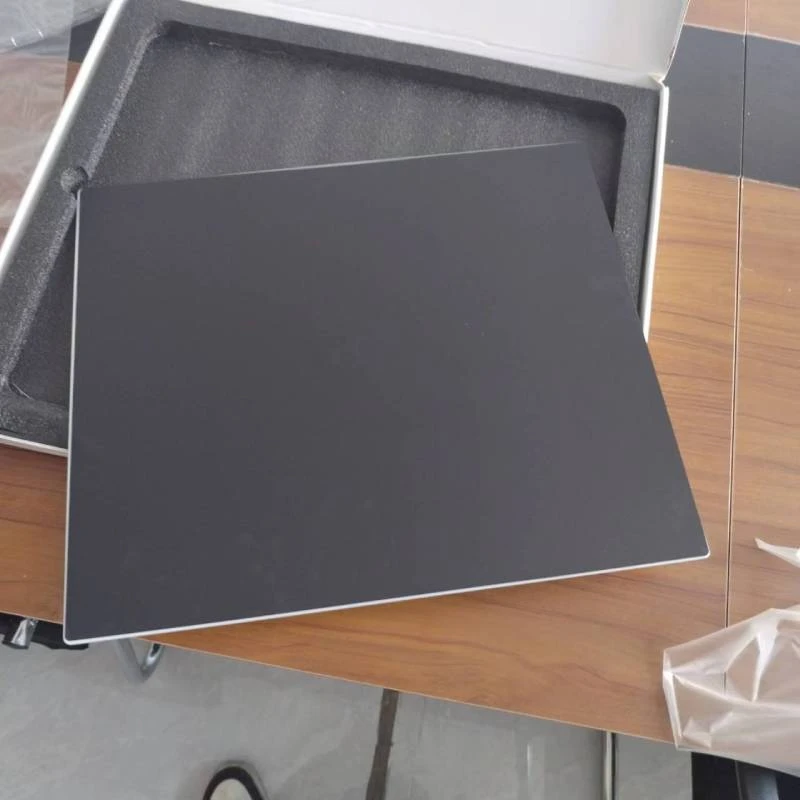Understanding Tempered Glass Benefits and Applications
Tempered glass, also known as toughened glass, is a type of safety glass that has been treated through controlled thermal or chemical processes to increase its strength compared to standard glass. It is often used in a variety of applications, ranging from architectural elements to automotive features, due to its enhanced safety and performance characteristics. This article will explore the manufacturing process, advantages, and diverse applications of tempered glass.
Manufacturing Process
The process of making tempered glass involves heating glass to a temperature of about 600 degrees Celsius (approximately 1,112 degrees Fahrenheit) and then rapidly cooling it. This heating and cooling process puts the outer surfaces of the glass into compression while placing the interior into tension. This unique balance of stresses results in tempered glass being up to five times stronger than regular, untreated glass of the same thickness. Additionally, if tempered glass is broken, it shatters into small, blunt pieces rather than sharp shards, significantly reducing the risk of injury.
The production of tempered glass typically follows these steps
1. Cutting The glass is cut to the desired size and shape using specialized machinery.
2. Polishing The edges of the glass are polished to remove any rough areas that could pose a safety hazard.
3. Heating The glass is loaded into an annealing oven, where it is heated uniformly.
4. Cooling The glass is then rapidly cooled using air jets, creating the compression and tension that defines tempered glass.
5. Quality Control Throughout the entire process, quality checks are conducted to ensure that the glass meets industry safety standards.
Advantages of Tempered Glass
Tempered glass offers several benefits which make it a preferred choice in many applications
1. Safety As mentioned earlier, tempered glass shatters into small granules instead of jagged pieces, reducing the risk of severe injury. This feature makes it ideal for use in environments where safety is a concern, such as schools, public buildings, and transport vehicles.
2. Strength and Durability With its increased strength, tempered glass is less likely to break from impacts or thermal stress, making it suitable for high-traffic areas or structures exposed to harsh weather conditions.
3. Thermal Resistance The thermal processes employed in its creation allow tempered glass to withstand larger temperature variations. This attribute is particularly beneficial in applications where glass may be exposed to extreme conditions, such as patio doors or shower enclosures.
tempered glass made
4. Design Versatility Available in various sizes, colors, and finishes, tempered glass can be customized to meet aesthetic preferences. This versatility enables its use in residential, commercial, and automotive design without compromising style for safety.
Applications of Tempered Glass
The applications of tempered glass are diverse, spanning many industries
- Architectural Use Tempered glass is commonly used in windows, facades, and glass doors for buildings. Its strength and safety features make it a trustworthy choice for skyscrapers and commercial spaces.
- Automotive Industry Tempered glass is frequently used for car windows and windshields. Its strength ensures passenger safety during collisions, while its ability to resist thermal stress is beneficial in automotive design.
- Home Decor In residential spaces, tempered glass is popular for table tops, shower doors, and decorative panels due to its stylish appearance and durability.
- Furniture Design It is also prevalent in modern furniture design, where the sleek look of glass is favored. Coffee tables, shelves, and cabinets made with tempered glass provide both visual appeal and safety.
- Industrial Applications In industrial settings, tempered glass can be found in railings, machine guards, and glass partitions, where strength and safety are critical.
Conclusion
In summary, tempered glass is a superior choice in both safety and design, offering strength, durability, and aesthetic versatility. Its manufacturing process ensures enhanced performance, making it suitable for a wide array of applications. Whether in architectural design, automotive engineering, or home decor, tempered glass continues to be an essential material in modern-day applications, marrying functionality with style. As technology advances, its uses are likely to expand, securing its place in the future of construction and design.
 Afrikaans
Afrikaans  Albanian
Albanian  Amharic
Amharic  Arabic
Arabic  Armenian
Armenian  Azerbaijani
Azerbaijani  Basque
Basque  Belarusian
Belarusian  Bengali
Bengali  Bosnian
Bosnian  Bulgarian
Bulgarian  Catalan
Catalan  Cebuano
Cebuano  Corsican
Corsican  Croatian
Croatian  Czech
Czech  Danish
Danish  Dutch
Dutch  English
English  Esperanto
Esperanto  Estonian
Estonian  Finnish
Finnish  French
French  Frisian
Frisian  Galician
Galician  Georgian
Georgian  German
German  Greek
Greek  Gujarati
Gujarati  Haitian Creole
Haitian Creole  hausa
hausa  hawaiian
hawaiian  Hebrew
Hebrew  Hindi
Hindi  Miao
Miao  Hungarian
Hungarian  Icelandic
Icelandic  igbo
igbo  Indonesian
Indonesian  irish
irish  Italian
Italian  Japanese
Japanese  Javanese
Javanese  Kannada
Kannada  kazakh
kazakh  Khmer
Khmer  Rwandese
Rwandese  Korean
Korean  Kurdish
Kurdish  Kyrgyz
Kyrgyz  Lao
Lao  Latin
Latin  Latvian
Latvian  Lithuanian
Lithuanian  Luxembourgish
Luxembourgish  Macedonian
Macedonian  Malgashi
Malgashi  Malay
Malay  Malayalam
Malayalam  Maltese
Maltese  Maori
Maori  Marathi
Marathi  Mongolian
Mongolian  Myanmar
Myanmar  Nepali
Nepali  Norwegian
Norwegian  Norwegian
Norwegian  Occitan
Occitan  Pashto
Pashto  Persian
Persian  Polish
Polish  Portuguese
Portuguese  Punjabi
Punjabi  Romanian
Romanian  Russian
Russian  Samoan
Samoan  Scottish Gaelic
Scottish Gaelic  Serbian
Serbian  Sesotho
Sesotho  Shona
Shona  Sindhi
Sindhi  Sinhala
Sinhala  Slovak
Slovak  Slovenian
Slovenian  Somali
Somali  Spanish
Spanish  Sundanese
Sundanese  Swahili
Swahili  Swedish
Swedish  Tagalog
Tagalog  Tajik
Tajik  Tamil
Tamil  Tatar
Tatar  Telugu
Telugu  Thai
Thai  Turkish
Turkish  Turkmen
Turkmen  Ukrainian
Ukrainian  Urdu
Urdu  Uighur
Uighur  Uzbek
Uzbek  Vietnamese
Vietnamese  Welsh
Welsh  Bantu
Bantu  Yiddish
Yiddish  Yoruba
Yoruba  Zulu
Zulu 

